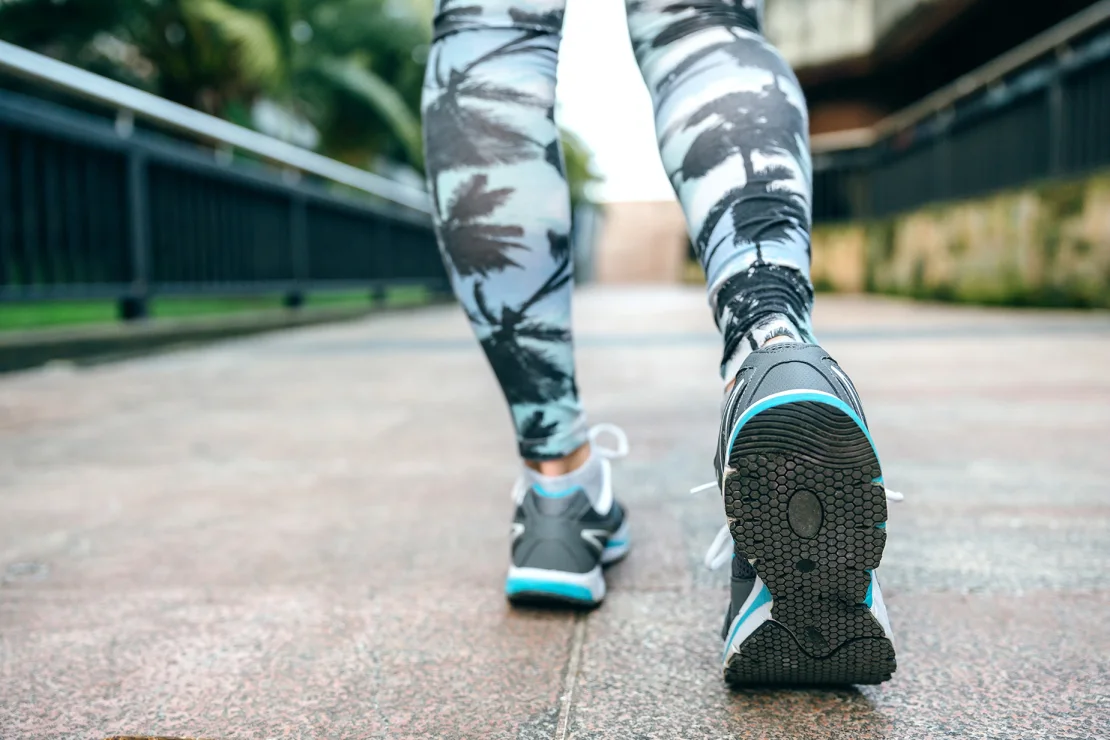Health


Researchers are reporting that hypertension and high cholesterol before age 55 can increase the risk of heart disease later in life.
They note that this risk remains, even if the individual takes steps to control these conditions after age 55.
The researchers said that heart disease is typically a result of a cumulation of risk factors, including genetics. However, as people age, genetics play less of a role.
Having high blood pressure and/or high cholesterol before age 55 can increase the risk of heart disease, even in people who improve those conditions as they get older.
Those findings are part a studyTrusted Source published today in the journal PLOS ONE.
The researchers used a 3-sample randomization analysis of participants who were registered with the UK Biobank.
There were three groups in the analysis:
136,648 people had high cholesterol (LDL-C)
135,431 people had elevated systolic blood pressure (SBP)
24,052 people had coronary heart disease
What researchers learned from heart disease study
The researchers noted that when high LDL-C and SBP could be predicted based on genetics, there was a risk of coronary heart disease, regardless of the age of diagnosis.
They also pointed out that those with elevated SBP and LDL-C in early to midlife were at an increased risk of coronary heart disease, independent of their SBP and LDL-C levels in later life.
The researchers also noted that coronary heart disease is generally a result of cumulative exposure to risk factors, such as SBD and LDL-C, and these can have long-lasting implications on a person’s risk.
They added that the effects of SBP on coronary heart disease diminished with age, nothing that this could be due to a previous observationTrusted Source that the effects of genetic on several diseases begin waning later in life.
In their discussions of study results, the researchers also point out that their findings are consistent with randomized controlled trials that suggest the use of blood pressure medications and statins can help, even in old age. Despite this, they say the use of statins and blood pressure medicine often declines with age.
The researchers suggest that treating young individuals with elevated SBP and/or LDL-C is essential to minimize accumulated exposure throughout their lives.
“Our findings suggest that old age alone should not be a reason to withhold otherwise appropriate LDL-C and BP-lowering treatments, because the effect of genetically mediated LDL-C and SBP on the incident risk of [coronary heart disease] is consistent throughout life,” they wrote.
Experts weigh in on cholesterol, hypertension study
“We have known that high blood pressure and elevated cholesterol are risk factors for heart disease,” said Dr. Cheng-Han Chen, an interventional cardiologist and medical director of the Structural Heart Program at MemorialCare Saddleback Medical Center in California who was not involved in the research. “This study examines the relationship over a long time and adds to our understanding of the relationship in different age groups.”
“It will not change how I treat my patients as I already treat hypertension and high cholesterol throughout a person’s lifespan,” Chen told Medical News Today. “I already treat people under 55 for both high cholesterol and high blood pressure.”
Dr. Yu-Ming Ni, a cardiologist and lipidologist at MemorialCare Heart and Vascular Institute at Orange Coast Medical Center in California who was not involved in the study, agrees that the research isn’t going to change his overall scope of treatment.
However, Ni said he might be more aggressive in managing cholesterol at a younger age.
“I might talk to my younger patients who have more chances of making changes to diet/lifestyle, better explain the risks, and work with them on changes they can make in their daily lives,” he told Medical News Today.
“As we age, other factors take over, such as smoking, sedentary lifestyle, and poor eating habits, and take over the role of genetics,” Ni added. “When that happens, we need to modify these things to lower our risk of high cholesterol. This study shows that the longer you have high cholesterol, the higher your chance of heart disease.”
“I like the studies using the UK Biobank because they have a large pool of people to draw from,” Ni said. “The results are reliable.”
The researchers noted that their study did have limitations. For example, the use of antihypertensives and lipid-lowering medications varied between age groups. To help account for this, the researchers adjusted SBP and LDL-C based on treatment status.
HEALTHLINE RESOURCE
Free Cholesterol-Lowering Tips — All Medically Reviewed
Get our cholesterol micro-lessons to support you in making lasting lifestyle changes to manage your cholesterol levels. Our experts have gathered cholesterol-lowering tips into free weekly 5-min lessons.
Risk factors for high blood pressure, cholesterol
Experts say that lifestyle factors play a significant role in both high cholesterol and blood pressure.
According to the Centers for Disease Control and PreventionTrusted Source (CDC), some of the risk factors for high blood pressure include:
Unhealthy diet, especially those that are high in sodium and low in potassium
Physical inactivity
Obesity
Misuse of alcohol
Smoking or other tobacco use
The CDCTrusted Source lists risk factors for high cholesterol as:
Type 2 diabetes
Obesity
Diets high in saturated and trans fats
Physical inactivity
Smoking
Poor diet, obesity, physical inactivity, and smoking are on both lists.

Head into any gym, and you may find someone walking backward on a treadmill or pedaling in reverse on an elliptical machine. While some may be employing reverse motion as part of a physical therapy regimen, others may be doing so to boost their physical fitness and overall health.
“I think it’s amazing to add in some backwards motion to your day,” said Grayson Wickham, a physical therapist at Lux Physical Therapy and Functional Medicine in New York City. “People are sitting way too much today, plus they lack varied movement.”
Quite a few studies have been done on the potential benefits of retro walking, a common term for walking backward. Participants who walked backward on a treadmill for 30 minutes at a time over four weeks increased their balance, walking pace and cardiopulmonary fitness, according to a March 2021 study.
Retro walking may even sharpen your mind and help you become more mindful, as your brain needs to be more alert when moving in this novel fashion. For this reason, plus the fact that backward motion helps with balance, older adults may especially benefit from incorporating some backward strolls into their routine, as one 2021 study of patients with chronic stroke indicates.
Switch up the muscles you’re using
Why is backward motion so helpful? “When you’re propelling yourself forward, that’s a hamstring-dominant movement,” said Landry Estes, a certified strength and conditioning specialist in College Station, Texas. “If you’re walking backwards, it’s a role reversal, where your quads are firing and you’re doing knee extensions.”
As a result, you’re working different muscles, which is always beneficial, plus gaining strength. “Strength overcomes a lot of deficiencies,” Estes said.
You’re also moving your body in an atypical way. Most people spend their days living and moving in the sagittal plane (forward and backward motion), and almost exclusively in the forward sagittal plane, Wickham said.
“The body adapts to the positions and movements and postures you do most often,” Wickham said. “That can lead to tight muscles and joints, which leads to joint compensation, which leads to joint wear and tear, then pain and injury. The more we can add in varied movement into our day-to-day activities or in the gym, it’s so much more beneficial for the body.”

It’s very important to remember the importance of Health and Safety at work. For example, employees need to know the risks in their workplace so they can help to mitigate the risk of an accident. The same goes for employers, however, they need to also take into account risk assessments.
There is a link between a good sleeping pattern and health and safety at work, keep on reading to find out what this correlation is.
How are they linked?
A study by the Journal of Occupational and Environmental Medicine found that sleep deprivation contributes to decreased employee productivity at a high cost to employers, with an estimated $1967 cost annually. This shows how important it is to have a good sleeping pattern, for everyone involved in a business.
Keep on reading to learn more about how a good sleeping pattern affects Health and Safety at work.
Sleep Deprivation can lead to decreased workplace safety
Sleep deprivation can have a negative effect on employees’ reaction times and alert levels. As a result, this will have a higher risk of accidents, particularly in construction sites where the risk of injury is greater.
Therefore, a good sleeping pattern can lead to positive reaction times, reducing the chance of injury should a situation occur. For example, if an individual works as a builder, they work with machinery, vehicles, and heavy objects. If the employee has a good sleeping pattern their reaction speeds will be quicker, which could be the difference between an accident occurring or not.
Increased Immunity
Another risk to employers is germs coming into the workplace, leading to a significant number of staff being off sick. This leads to many of the team’s functions coming to a halt, and much of the business will be unable to function normally.A good sleeping pattern will increase an individual’s immunity, decreasing the risk of germs being bought to the workplace. Similarly, an increased immune system will reduce the risk a germ will be passed on to a fellow employee. A good immune system will decrease the time the employee is off sick, too.
Employees will be more upbeat, increasing mood and communication
Another benefit to a good sleeping pattern is the positive effect on mood. An increased mood will lead to the employee feeling more motivated about their work, and they are more likely to engage with their team about general life, as well as work.
Should a situation arise at work with a health and safety situation, if the team has better communication on tasks, then they are more likely to work together to fix a health and safety crisis.
This also accounts for mental health too. If the team feels closer, then they are more likely to open up about their struggles, forming a resolution to the problem quicker.

ISLAMABAD (Web Desk) - A new study, published in the journal Human Genetics, analyzed data from hundreds of thousands of human genomes from individuals with and without a history of migraine or headache.
Previous researchTrusted Source has shown that there are several gene and biochemical pathways that are shared between migraine and headache and blood sugar-related traits, such as fasting insulin and glycated hemoglobin.
However, it was unclear how these conditions were genetically linked.
To investigate this relationship, researchers analyzed large-scale genetic data from European populations.
They looked for genetic similarities between migraine, headache, and nine blood sugar-related traits. They also identified regions of the genome that were linked to both types of conditions.
The researchers also suggested a potential causal relationship between increased fasting proinsulin levels and decreased risk of headaches.
Identifying genetic markers associated with migraine and headache
The researchers conducted a meta-analysis with blood sugar-related traits that they say identified six new genetic markers associated with migraine and headache, finding that certain genes were associated with these conditions.
They said these findings provide insights into the biological mechanisms underlying the comorbidity of these conditions.
Using a statistical technique called Mendelian randomization, the researchers explored the causal relationship between mechanisms and conditions.
They reported some evidence to suggest that increased fasting proinsulin levels may decrease the risk of headaches, but the evidence for a causal link between migraine and other blood sugar-related traits was less clear.
Overall, they said, these findings suggest that migraine, headache, and blood sugar-related traits may have a common genetic basis and provide insights into the ways that they contribute to their co-occurrence.
Md Rafiqul Islam, PhD, a study author and a student at the School of Biomedical Sciences at the Centre for Genomics and Personalized Health at Queensland University of Technology in Australia, spoke to Medical News Today about the research.
“Our study revealed a significant overlap between the genetic risk factors (e.g., genes and genetic variants) for migraine and blood sugar regulation, suggesting that these conditions have a common genetic basis,” Islam said. “Additionally, we identified several genetic regions associated with an increased risk for both conditions, indicating that they share similar biological pathways and mechanisms.”
The study found that shared genetic risk factors for these diseases are significantly enriched in certain cellular pathways, including epigenetic mechanisms, autoimmune pathways, and cellular signaling, which provides important clues about the underlying mechanisms of these conditions and may help researchers in developing new treatments.
Md Rafiqul Islam, PhD student
Sarah-Nicole Bostan, PhD, the director of Behavior Change Strategy at Signos who was not involved in this research, helped to explain the background of this research topic to Medical News Today.
“Migraine and headaches are two of the most common types of pain-related issues most likely to be reported to non-physician healthcare providers,” she said.
“They often lead to unnecessary medical visits and associated healthcare costs,” Bostan added.
Migraine and headaches are unusual in the sense that they are disorders of exclusion, meaning that diagnoses are arrived at by ruling out serious pathology, which is an inverse process compared to other health conditions. This often leaves patients feeling frustrated and confused about what actionable steps they can take to manage their pain and wondering what might be the root cause.
Sarah-Nicole Bostan, PhD
Bostan explained that in the field of applied psychophysiology and biofeedback, headaches are usually caused by tight muscles, while migraine is often caused by problems with blood flow.
Knowing the difference between these two types of pain can help people treat their symptoms by learning relaxation techniques such as heart rate variability biofeedback, muscle tension biofeedback, making changes to their diet, and taking time to rest or exercise during a migraine.
“This research provides a glimpse of how metabolic and cardiorespiratory factors may be working in tandem even at the genetic level, and how there may be shared genetic etiology of headaches and migraines,” Bostan noted.
Potential implications for people with migraine, headaches
Islam explained how researchers “found shared genes, genetic variants, and pathways associated with an increased risk of migraine and blood sugar imbalance.”
“With this information, researchers can make new screening tests to find people at high risk for developing migraine and blood sugar-related diseases (e.g., diabetes) even before they show symptoms, which can facilitate earlier diagnosis and treatment, thereby improving patient outcomes,” Islam said.
Eventually, this can also lead to better health outcomes for the general population and lower healthcare costs associated with treating diseases like migraine. Furthermore, targeting identified shared pathways (e.g., epigenetic mechanisms, autoimmune pathways, and cellular signaling) may be an effective strategy for developing new treatments for these diseases.
Md Rafiqul Islam, PhD Student
Nancy Mitchell, RN, a registered nurse and contributing writer at the Assisted Living Center, agreed.
“These results could provide a breakthrough in treatment avenues for migraine headaches in particular,” she told Medical News Today.
Bostan pointed out that “although this research found inconsistent evidence regarding impact of glycemic traits on headaches/migraine and noted that their findings were only “nominally significant,” it opens a door to further studying the specific glycemic traits that may be ripe for changing to influence pain pathology.”
“Specifically, the finding that hypoglycemia may be a migraine or headache trigger is consistent with what our members at Signos have anecdotally reported,” she said.
Many have noted they don’t realize their blood sugar may be dipping quickly before experiencing the onset of migraine or headache pain, and once they stabilize their blood sugar through eating a nutritionally balanced meal, people may be able to ameliorate some of this pain if they intervene early enough.
Sarah-Nicole Bostan, PhD
“Previously, behavioral treatments for migraine and headache have focused on relaxation training, cognitive reappraisal of a difficult situation, and nodded to food choices and exercise,” she added.
Bostan concluded that “the takeaway here is that our metabolic stability can influence pain, and therefore, use of metabolically-targeted interventions may be even more important than previously known.”

The most advanced and effective communication device in this century is the Mobile phone. A mobile phone is not only being used by a corporate or highly qualified professional. People from all types of social groups have mobile phones in their hands now. The usage of the mobile phone is not increased only with all social groups but also with people of all age groups. Children are the more noticeable group as they are using cell phones of all types.
Harmful Effects of Mobile Phones on Children
A recent research study shows that children are really capable of using an advanced type of mobile phones even without any proper guidance. Though mobile phones are the effective mode of communication, it is a well-known fact that it also has adverse side effects if being overused. Mobile phones emit shockwave radioactive radiation that affects the children body in various manners.
Side Effects of Mobile Phones on Children's Health
Today's children are growing up in a radio-frequency environment that never existed in human history before. The radiation emitted by mobile phones and mobile phone masts can have adverse effects on children. Some include:
Mobile Phone affects Your Immunity Status: Cell phones after a full day usage contains many germs on their display which are highly numbered than your toilet seats. These germs are easily transferred to your body as you touch frequently or use close to your face for talking. This increases the risk of exposure to the germs and reduces your immune strength as immune status is not fully developed for children. Increase Risk of Chronic Pains: Prolonged use of mobile phones for playing games or texting requires continuous movement for your hands which may develop chronic pain in joints of your shoulders and hands.
Effect of the Mobile phone on Vision Problem: While using small size mobile phone screen to read some text, article for long hours, the child put lots of pressure or strain on eyes and sometimes it starts to dry out and start headaches. Children when concentrating much on playing games on mobile phones they even fail to blink frequently with the increased interest and attraction towards the game. This causes the dryness of the conjunctiva and also increases the ocular tension. Increase stress level: Affects your emotions negatively and increases the stress level
Mobile Phone Safety Tips For Kids
As a parent, you must take preventive measures to minimize your child's exposure to the harmful effects of mobile phones. These include:
Do not give cell phones if your child is under 16 years. A child's brain is too sensitive to withstand the effects of mobile radiation. Do not let your child hold a mobile phone directly up to his head. Use an air-tube headset instead. Do not let your child make calls on buses, trains, cars, and elevators. The mobile phone works harder to get the signal out through the metal, which increases the power level.
Do not let your child use a cell phone when the signal is weak. It will increase the power to the maximum, as the phone attempts to connect to a new relay antenna. Limit the use of cell phones around children.
Make sure that there is no mobile phone mast or network tower near your home or your kid's school. Do not let children take mobile phones to school.
Do not leave mobile phones in your children's bedroom at night.

ایک تازہ تحقیق سے معلوم ہوا ہے کہ یومیہ انگور کھانے سے جلد کی تیزابیت یا سورج کی روشنی میں جسم جلنے کے مسئلے سے بچا جا سکتا ہے۔
جلد کی تیزابیت یا جسم کے دھوپ میں جلنے کو انگریزی میں ’سن برن‘(Sunburn) کہتے ہیں۔
’سن برن‘(Sunburn) کا مسئلہ سورج کی الٹرا وائلٹ (یو وی) یا شعاؤں سے جلد کو جلانے سے پیدا ہوتا ہے اور سورج کی روشنی یا شعاؤں سے جلد کے جلنے کی متعدد وجوہات ہوسکتی ہیں۔
سورج کی روشنی سے جلد کے جلنے کی عام وجہ اسکن کا خراب ہونا ہوتا ہے اور اگر یہی مسئلہ شدت اختیار کر جائےتو اس سے جلد کی کینسر بھی ہوسکتی ہے۔
امریکا اور یورپی ممالک میں سالانہ لاکھوں افراد کو ان ہی مسائل کی وجہ سے جلد کی کینسر لاحق ہوجاتی ہے اور وہاں کے لوگ سورج کی تپش سے بچنے کے لیے مختلف طریقے آزماتے ہیں۔
وہاں ماہرین نے انگوروں کے جلد کی جلن پر اثرات کا جائزہ لینے کے لیے ایک محدود تحقیق کی، جس کے لیے انہوں نے تین درجن افراد کی خدمات حاصل کیں۔
طبی جریدے ’ایم ڈی پی آئی‘ میں شائع تحقیق کے مطابق امریکی ماہرین نے جلد کی جلن پر انگوروں کے اثرات جاننے کے لیے 24 سے تقریبا 56 سال کی عمر 36 رضاکاروں کی خدمات حاصل کیں، جس میں سے 7 افراد تحقیق کو ادھورا چھوڑ کر چلے گئے۔
بعد ازاں ماہرین نے رہ جانے والے 29 رضاکاروں پر تحقیق کی اور انہیں دو ہفتوں تک یومیہ تقریبا 400 گرام انگور کھانے کا کہا گیا۔
تحقیق میں شامل 16 مرد اور 15 خواتین میں سے نصف کو دو ہفتوں تک مختلف یعنی سرخ، گلابی، جامنی اور ہرے انگور کھانے کی ہدایت کرنے سے قبل انہیں دیگر متعدد غذائیں کھانے سے روکا گیا اور ان کے مختلف ٹیسٹس بھی کیے گئے جب کہ ان کی جلد پر شعاؤں کو برداشت کرنے کی حساسیت بھی چیک کی گئی۔
ماہرین نے دو ہفتوں بعد تمام رضاکاروں کے ٹیسٹس کیے، ان کے خون کے نمونے، پیشاب اور پاخانے کے ٹیسٹ بھی کیے گئے جب کہ ان کی جلد میں شعاؤں کی حساسیت کو بھی چیک کیا گیا۔
نتائج سے معلوم ہوا کہ یومیہ تقریبا 400 گرام انگور کھانے والے افراد کے جلد کی حساسیت بڑھ گئی تھی اور وہ سورج کی متوسط تپش کو زیادہ دیر تک برداشت کرنے کے قابل ہوگئے تھے اور انہیں کسی طرح کی جلد یا گرمائش کا احساس نہیں ہوا۔
جب کہ ایسے افراد کے خون، پیشاب اور پاخانے کے ٹیسٹس بھی کم انگور کھانے والے افراد کے مقابلے زیادہ بہتر آئے۔
ماہرین نے تجویز دی کہ جلد کی جلن جیسے مسائل سے دوچار افراد یومیہ 380 سے 400 گرام انگور کھائیں تو ان کی جلد سورج کی تپش کو برداشت کرنے کے اہل ہوجائے گی۔
ماہرین نے کہا کہ مذکورہ معاملے پر مزید تحقیق کی ضرورت ہے، تاہم انگوروں کو یومیہ غذا بنانے سے دیگر بھی کئی طرح کے طبی فوائد ہوسکتے ہیں۔

یورپی ملک ناروے میں کی جانے والی ایک تحقیق کے دوران درمیانی اور بڑھتی عمر میں شادی کرنے کے مزید طبی فوائد سامنے آگئے۔
اس سے قبل شادی اور غیر شادی شدہ زندگی پر متعدد تحقیقات سامنے آ چکی ہیں، جن میں شادی کے کئی فوائد بتائے جا چکے ہیں۔
اب ناروے میں کی جانے والی تحقیق سے معلوم ہوا ہے کہ شادی شدہ افراد زائد العمری میں دماغی امراض یا مسائل سے محفوظ رہتے ہیں۔
طبی جریدے ’نیشنل لائبریری آف میڈیسن‘ (این آئی ایچ) میں شائع ایک تحقیق کے مطابق جو افراد درمیانی یا بڑھتی عمر میں شادی کرلیتے ہیں، ان میں زائد العمری میں ڈمینشیا سمیت دماغی افعال کا خطرہ نمایاں طور پر کم ہوتا ہے۔
ڈمینشیا ایک ایسا مرض ہے، جس کا تاحال کوئی علاج دریافت نہیں ہوا، البتہ بھلکڑ پن اس مرض کو مختلف ادویات اور غذاؤں کے ذریعے قابو کیا جاتا ہے۔
تاہم دماغی افعال کے مرض کی ادویات موجود ہیں لیکن اس میں بھی زیادہ تر ادویات فائدہ مند ثابت نہیں ہوتیں۔
اس حوالے سے بھی ماضی میں متعدد تحقیقات سامنے آ چکی ہیں یادداشت کمزور ہونے اور دماغی طور پر غیر فعال ہونے کا زائد العمری سے گہرا تعلق ہے، یعنی یہ مرض بڑھتی عمر کے ساتھ خود بخود انسان کو جکڑ لیتے ہیں۔
تاہم انہیں روکنے کے کئی طریقے موجود ہیں، جن میں سے شادی بھی ایک طریقہ ہے۔
ناروے میں کی جانے والی تحقیق کے دوران ماہرین نے 8 ہزار 700 سے زیادہ 44 سے 65 سال کی عمر کے مرد و خواتین پر سروے کیا۔
سروے کے دوران ماہرین نے رضاکاروں کی شادی کی عمر، ان کے بچوں اور ان کی روز مرہ کی زندگی اور کھانے پینے کی عادتوں کو بھی چیک کیا۔
بعد ازاں ان افراد میں ڈمینشیا اور دماغی افعال سمیت دیگر ذہنی مسائل کا جائزہ لیا گیا۔
رضاکاروں میں ایسے افراد بھی شامل تھے جو غیر شادی شدہ یا پھر طلاق یافتہ بھی تھے اور بعض افراد کے شریک حیات ان سے بچھڑ گئے تھے۔
تحقیق کے دوران ان افراد میں ڈمینشیا یا دماغی کمزوری کے مسائل زیادہ پائے گئے جن کے پاس شریک حیات نہیں تھے۔
ماہرین نے پایا کہ جن افراد کی شادیاں برقرار ہیں، ان کی ذہنی صحت قدرے بہتر ہے اور وہ دماغی طور پر بھی فعال ہیں۔
تاہم ماہرین نے کہا کہ ایسا بلکل نہیں ہے کہ شادی بڑھتی عمر میں ڈمینشیا سے تحفظ فراہم کرتی ہے لیکن نتائج سے معلوم ہوا کہ شادی شدہ افراد میں مذکورہ مرض میں مبتلا ہونے کے امکانات 8 فیصد تک ہوجاتے ہیں۔
ماہرین کے مطابق یہ واضح نہیں ہے کہ شادی شدہ افراد کس طرح ڈمینشیا سے محفوظ رہنے سمیت دماغی طور پر فعال رہتے ہیں، تاہم بظاہر ایسا لگتا ہے کہ شادی شدہ افراد کے بچے اور خاندان ہوتا ہے، جن سے انہیں تنہائی سے نجات ملتی ہے اور وہ سماجی طور پر بھی متحرک رہتے ہیں اور ممکنہ طور پر اسی وجہ سے وہ دماغی طور پر متحرک رہتے ہیں۔
ماہرین کے مطابق شادی شدہ افراد جوڑے کی صورت میں ایک دوسرے کو سہارا بھی دیتے ہیں، جس سے ان کی ذہنی و دماغی صحت بہتر رہتی ہے اور بظاہر وہ جسمانی طور پر بھی اچھے ہوتے ہیں۔


